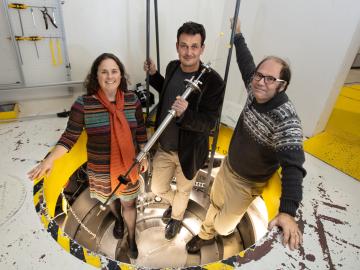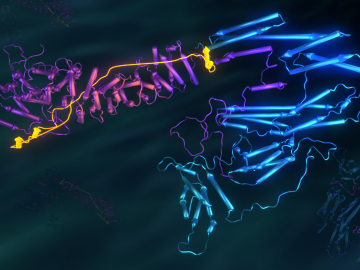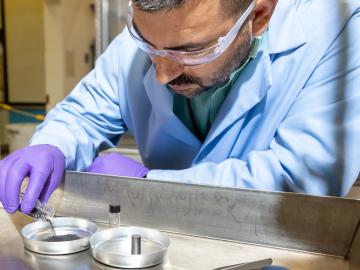
Filter News
Area of Research
News Type
News Topics
- (-) Advanced Reactors (6)
- (-) Clean Water (10)
- (-) Cybersecurity (9)
- (-) Fusion (12)
- (-) Molten Salt (5)
- (-) Neutron Science (44)
- 3-D Printing/Advanced Manufacturing (23)
- Artificial Intelligence (23)
- Big Data (13)
- Bioenergy (21)
- Biology (23)
- Biomedical (10)
- Biotechnology (4)
- Buildings (10)
- Chemical Sciences (14)
- Composites (5)
- Computer Science (45)
- Coronavirus (2)
- Critical Materials (5)
- Emergency (1)
- Energy Storage (21)
- Environment (49)
- Exascale Computing (12)
- Fossil Energy (2)
- Frontier (13)
- Grid (20)
- High-Performance Computing (18)
- Hydropower (3)
- Irradiation (1)
- Isotopes (11)
- Machine Learning (14)
- Materials (26)
- Materials Science (23)
- Mathematics (2)
- Mercury (4)
- Microelectronics (2)
- Microscopy (7)
- Nanotechnology (12)
- National Security (15)
- Nuclear Energy (33)
- Partnerships (6)
- Physics (15)
- Polymers (8)
- Quantum Computing (9)
- Quantum Science (10)
- Security (4)
- Simulation (21)
- Software (1)
- Space Exploration (10)
- Summit (13)
- Transportation (28)
Media Contacts

As scientists study approaches to best sustain a fusion reactor, a team led by Oak Ridge National Laboratory investigated injecting shattered argon pellets into a super-hot plasma, when needed, to protect the reactor’s interior wall from high-energy runaway electrons.

Scientists at the U.S. Department of Energy’s Brookhaven National Laboratory have new experimental evidence and a predictive theory that solves a long-standing materials science mystery: why certain crystalline materials shrink when heated.

Two of the researchers who share the Nobel Prize in Chemistry announced Wednesday—John B. Goodenough of the University of Texas at Austin and M. Stanley Whittingham of Binghamton University in New York—have research ties to ORNL.

In a recent study, researchers at Oak Ridge National Laboratory performed experiments in a prototype fusion reactor materials testing facility to develop a method that uses microwaves to raise the plasma’s temperature closer to the extreme values

Researchers used neutron scattering at Oak Ridge National Laboratory’s Spallation Neutron Source and High Flux Isotope Reactor to better understand how certain cells in human tissue bond together.

Researchers used neutron scattering at Oak Ridge National Laboratory’s Spallation Neutron Source to probe the structure of a colorful new material that may pave the way for improved sensors and vivid displays.

Ask Tyler Gerczak to find a negative in working at the Department of Energy’s Oak Ridge National Laboratory, and his only complaint is the summer weather. It is not as forgiving as the summers in Pulaski, Wisconsin, his hometown.

Using additive manufacturing, scientists experimenting with tungsten at Oak Ridge National Laboratory hope to unlock new potential of the high-performance heat-transferring material used to protect components from the plasma inside a fusion reactor. Fusion requires hydrogen isotopes to reach millions of degrees.

A new method developed at Oak Ridge National Laboratory improves the energy efficiency of a desalination process known as solar-thermal evaporation.

Scientists at Oak Ridge National Laboratory studying quantum communications have discovered a more practical way to share secret messages among three parties, which could ultimately lead to better cybersecurity for the electric grid


